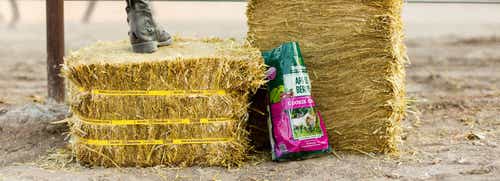
Llamas, the Ultimate Backcountry Hiking Partner?
Go further, stay longer and hike harder with your 300 pound (llama) hiking partner!
Llamas have been raised in South America for centuries as pack animals. The packing ability of llamas combined with their ease of transport enables them to be utilized in a wide variety of situations and makes them ideal for packing. They are popular with hikers and hunters on longer overnight trips because they can carry most or all of the gear.
Advantages
There are many advantages to using llamas over other types of pack animals.
- Llamas do not have hooves. They have two-toed padded feet with a toenail which grows over the top of each toe. This makes them very sure-footed. The pads do much less damage to the environment because they do not tear into and dent the ground the way hooves can. For this reason, llamas are often allowed on trails where horses are prohibited
- Llamas are browsers, not grazers, and can eat various plants while moving along the trail. This means less time required to stop and graze.
- Llamas also require less feed than other pack animals. This means that less weight in the packs is devoted to llama feed.
- Llamas are more maneuverable and smaller than other pack animals and can go through/over/under/into almost any area that people can. This is not true of other pack animals and gives llamas a tremendous advantage.
- Llamas are easy to transport.
Frequently Asked Questions (FAQs)
How much can a llama carry?
The amount of weight which llamas can carry depends upon their age, condition, the terrain and distance to be traveled. Just like people, llamas need to get into shape before going on long hikes with a lot of weight. Younger llamas and llamas packing over more difficult terrain should carry less weight than when traveling on less difficult terrain.

Based on age, llamas can carry a certain percentage of their lean body weight. You should estimate their body condition before determining if the actual weight of the llama is a good estimate of lean body weight. An overweight llama will not be able to safely carry as much weight as one in good body condition. A one year old llama will be about 125 to 200 pounds. A 2-3 year old llama will be about 175 to 300 pounds. An adult llama will be about 225 to 450 pounds if not overweight.
Approximate Amount of Weight Llamas Can Carry
| Age | Percent of Body Weight |
|---|---|
| 1 year | 10% |
| 2 to 3 years | Up to 20% |
| Adult | 20 to 25% |
Can you ride a llama?
Because a llama weighs much less than a horse, it is not an animal that can be ridden by an adult. For example, if a llama weighs 300 lbs., then it could typically carry 60 - 75 lbs., which is 20 - 25% of its body weight. (See above chart.)
How do you transport a llama?
Llamas are easy to transport because they require no specialized equipment. They are smaller than traditional pack stock and lie down once in the transport vehicle. A covered windproof pickup (photo), van, horse or utility trailer all work well. The photo on the right shows llamas being transported in the back of a small pickup truck with an overhead canopy.
Do Llamas Spit or Bite?
Like other camelids, llamas spit at each other to establish their social order, but they rarely spit at humans. And llamas do not generally bite. They have front teeth (incisors) only on their bottom jaw and a dental pad on the top jaw.
Are Llamas Allowed on Public Lands?
Llamas are used to carry equipment and supplies for trail maintenance crews in state and national parks. (See the Sept. 4, 2017 blog - "Llamas Do Heavy Lifting for Chugach State Park Trail Crews" at www.alaskallamas.com.) It may surprise you to find out llamas have been used in Rocky Mountain National Park for some thirty years for trail maintenance and to haul out waste from privies.

Each week during the summer months, Beahm and a crew of llamas hike to the outhouses at the Longs Peak Boulder Field, Chasm Junction and Chasm Meadow or Gem Lake. There, Beahm shovels out the waste from the privies, dumps it in black trash bags and hoists them into packs draped over the sides of the llamas. From "Cleaning toilets amid 'God's Splendor'" and “Just a beautiful day, gone to waste”.
Do Llamas Carry Disease?
Some government agencies have voiced concerns that pack stock such as llamas and goats may pose a disease threat to wild animals. The weight of scientific evidence and studies to date demonstrate that llamas do not pose a disease threat to any wild animals including wild sheep.
Horses are not perceived as a disease threat to wild sheep and it seems reasonable for them to be accorded that status based on their taxonomic separation and history. That is the same separation and history that exonerates llamas. Horses are in the family Equidae; llamas are in the family Camelidae; and wild sheep are in the family Bovidae. The taxonomic separation of horses and llamas from wild sheep is important from a disease epidemiological standpoint because strong species barriers make disease transmission highly unlikely between Equidae/Camelidae and Bovidae. For more information on this go to packllamas.org.
In conclusion, those who use llamas are thankful for their quiet companionship and willingness to "do the heavy lifting" without complaining. I like to think of llamas as a "backpack with four legs." People who have packed with llamas will often decide not do it any other way again.
For more information on llamas, go to Alaska Llamas and Hiking or visit Alaska Llamas on Facebook.
Blog posted by Linda & Phil Nuechterlein







